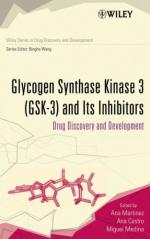|
This section contains 478 words (approx. 2 pages at 300 words per page) |

|
Glycolysis, a series of enzymatic steps in which the six-carbon glucose molecule is degraded to yield two three-carbon pyruvate molecules, is a central catabolic pathway in plants, animals and many microorganisms.
In a sequence of ten enzymatic steps, energy released from glucose is conserved by glycolysis in the form of adenosine triphosphate (ATP). So central is glycolysis to life that its sequence of reactions differs among species only in how its rate is regulated, and in the metabolic fate of pyruvate formed from glycolysis.
In aerobic organisms (some microbes and all plants and animals), glycolysis is the first phase of the complete degradation of glucose. The pyruvate formed by glycolysis is oxidized to form the acetyl group of acetyl-coenzyme A, while its carboxyl group is oxidized to CO2. The acetyl group is then oxidized to CO2 and H2O by the citric acid cycle...
|
This section contains 478 words (approx. 2 pages at 300 words per page) |

|


